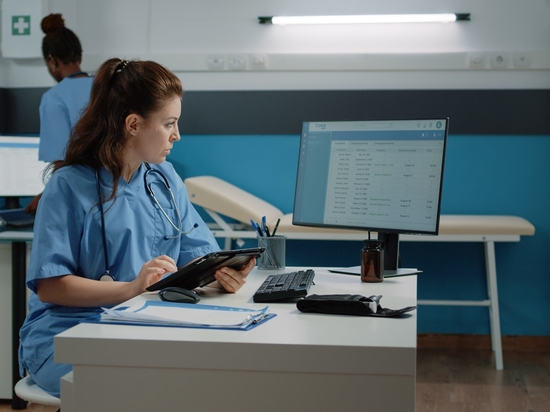
#Industry News
How to Improve Patient Outcomes: Best Practices for Healthcare Professionals
Why asking "How are you feeling?" is important to both patients and healthcare organizations
"How are you feeling?"
Ever noticed how much you're asked that question when you visit your provider for a check-up? You'll get asked even more if you're hospitalized for any time. While you're right in thinking the question is a query of your health, it and your responses are part of an important medical practice called a "patient outcome." Today's article covers precisely these, their importance in the health industry, and five ways to keep it high for any medical group.
What Is An Outcome in Healthcare?
An "outcome" in healthcare refers to the changes in a patient's health as a result of a medical intervention. This "intervention" encompasses any care and treatment offered by a hospital or medical facility. Examples of interventions include hospital stays, surgical procedures, and the use of antibiotics. The impact of these interventions on the patient, or how they alter the patient's condition, constitutes an outcome.
Measuring the health outcomes of patients is vital to healthcare groups. Today's patients are more informed than ever about their medical options and will stick with groups they feel provide stellar outcomes. This rewards the group with more funding and a better reputation.
Adverse outcomes like infections and diagnostic mistakes have the opposite effect. Besides possible financial loss and a ruined reputation, the group may come under scrutiny by state and federal health boards and agencies.
Healthcare groups use Patient-Reported Outcomes, or PROs, to evaluate and review patient outcomes in their hospitals or practices. PROs come in various forms: self-reporting apps, questionnaires, interviews, and patient kiosks. All help providers better assess their patient's health status and satisfaction.
Here are five ways healthcare organizations can improve patient outcomes.
Prioritizing Patient Safety for a Positive Health Outcome
Ensuring patients are safe is a significant way to provide a positive health outcome. Here are some methods to do so:
Keep the facilities as clean as possible. This prevents the spread of opportunistic infections. Equipment like medical-grade monitors can make the task much more manageable. Medical staff can spray hospital-grade cleaners on them without concern of damage thanks to their IP65-rated sealed front bezels against dust and liquids.
Standardize on one electronic medical records system (EMR). Or, if different EMRs are used for different departments, ensure they're all compatible. Such set-ups help reduce inefficiencies like multiple patient records as well as errors.
Use medical-grade equipment like medical-grade computers as much as possible. They have been tested and certified to work with other hospital electronics without interference. They're also safe to work near patients.
Following safety procedures and protocols can go a long way to a positive outcome for both the patient and the healthcare group.
Communicate to Improve Patient Outcome
Patients and their family members appreciate being kept updated on the progress of the patient's treatment. Healthcare providers can improve the chances of a successful outcome by ensuring that patients are well-informed about their medical condition and care.
Electronic tools like telehealth make it easier for patients to stay in touch with their providers. Some ways they can be applied include:
Help manage chronic diseases. Patients can reach out from their homes or other remote locations for medical care 24/7. The provider and other medical staff stay in touch via real-time video or chat, providing everything from regular virtual follow-ups to simply giving reassurance.
Ensure continuity of care and discharge procedures. Providers can ensure their discharged patients receive proper aftercare after leaving the hospital. All involved providers are given summary reports to provide consistent treatment, which they provide to the patients through telehealth technologies like video chats and even reminders to take their medications. These methods aim to improve patient outcomes and minimize readmission to the hospital for the same condition.
Engaging with patients outside of the exam room or hospital helps improve outcomes and patient satisfaction.
Going Remote for Better Health Outcomes
Not all patients are sound enough to stay actively engaged with their providers via video or chat. They may be unsure how to convey their symptoms or speak a different language. Or they may have medical conditions like a stroke or dementia that may make such personal engagement impossible.
Digital technologies such as remote patient monitoring (RPM) can be incredibly helpful in scenarios where it's crucial to monitor patients closely. This involves the continuous monitoring of a patient's vital signs using medical devices at their location. The collected data is then transmitted to the patient's healthcare provider and staff around the clock. As a result, virtual check-ups can be conducted, allowing the provider to access the data on their computer or medical tablet.
There’s another advantage to RPM. Medical staff can quickly react to any abnormalities like a heart attack, alerting any on-site staff like a caregiver or calling 9-1-1.
RPM and related technologies like healthcare wearables improve the outcome for patients whose health issues cannot wait for in-person visits.
Improving Health Outcome Through Data and Analytics
Healthcare groups can also improve patient outcomes by determining areas that need improvement. “Areas” can range from processes like registering patients as they come into the clinic to reducing insurance rejection.
Utilizing data and analytics is an impactful method for identifying and enhancing areas of improvement. Information can be gathered from various sources such as health records and patient surveys. Through analytics, it is possible to pinpoint specific areas that require attention. Additionally, analytics can be used to assess the impact of new policies on patient outcomes. For instance, it can determine whether patient satisfaction is affected if the visits with a healthcare provider are reduced from 20 minutes to 10 minutes.
Many healthcare groups today are turning to artificial intelligence in data gathering and analysis due to its speed and greater efficiency, especially compared to human analysts.
Satisfied Staff Equals Better Patient Outcome
Finally, healthcare groups should examine their medical staff. Specifically, they should see how their working conditions and the atmosphere of the group affect the staff's care of patients.
Do the providers have the proper support? “Proper support” can range from aides like nurses to the time needed to update patients’ EMRs. Lack of any of these can affect the provider, which in turn can lead to less-than-stellar care of their patients.
How do all important furnishings and equipment affect medical staff during their rounds? Ergonomics is the study of people’s efficiency in their working conditions. Ergonomics in healthcare applies this, for example, by ensuring equipment like medical monitors and workstations on wheels are appropriately adjusted for use without strain on staff during their rounds.
Providers and other health staff in the proper working conditions will thrive, leading to better patient outcomes.
Closing Comment
Patient outcomes are the results of intervention by providers. They are important to healthcare groups.
If you are seeking methods to maintain optimal patient outcomes within your healthcare group, we encourage you to get in touch with the professionals at Cybernet Manufacturing. We are eager to engage in a conversation about the impact of our medical-grade PCs on a wide range of outcomes, from enhancing patient safety to improving the ergonomics for medical staff.








